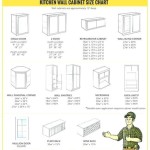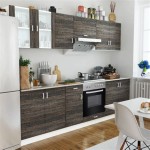Can I Make My Own Cabinet Doors? A Comprehensive Guide
The question of whether one can construct their own cabinet doors is a common one among homeowners, DIY enthusiasts, and woodworking hobbyists. The answer is definitively yes, but with the caveat that success depends heavily on a range of factors. These factors include the individual's skill level, the type of cabinet door desired, available tools and workspace, and the willingness to invest time and effort into the project.
Making cabinet doors represents a significant undertaking. It requires precision, patience, and a fundamental understanding of woodworking techniques. The process involves selecting appropriate materials, accurate measurements, precise cutting, joinery, assembly, sanding, and finishing. Each step contributes to the final aesthetic and functional quality of the cabinet door.
Choosing to build cabinet doors offers several potential advantages. Primarily, it presents an opportunity for significant cost savings compared to purchasing pre-made doors. It also allows for complete customization, enabling the creation of doors perfectly suited to specific design preferences and unique cabinet dimensions. Furthermore, the process can be a deeply rewarding experience, providing the satisfaction of creating a tangible and functional item with one's own hands.
However, potential challenges must also be considered. Constructing cabinet doors can be time-consuming, particularly for those new to woodworking. Errors in measurement or execution can lead to wasted materials and the need to start over. The initial investment in tools and equipment may be substantial, depending on the complexity of the desired doors and the tools already available. Additionally, achieving a professional-quality finish requires skill and specialized equipment, such as a spray gun.
This article will delve into the various aspects of creating cabinet doors, providing a comprehensive overview of the materials, tools, techniques, and considerations involved in the process. It aims to equip the reader with the information necessary to determine whether building their own cabinet doors is a viable option for their specific needs and circumstances.
Key Point 1: Understanding Cabinet Door Styles and Construction Methods
Before embarking on the construction process, it is crucial to understand the different types of cabinet door styles and the construction methods associated with each. The choice of style will significantly impact the complexity of the project and the required skill level.
Slab Doors: These are the simplest type of cabinet door, consisting of a single, flat panel of wood or manufactured wood product. They are relatively easy to construct, requiring only accurate cutting and edge finishing. Slab doors are often used in modern and minimalist designs.
Shaker Doors: Shaker doors are characterized by a five-piece construction: a central panel surrounded by four rails (horizontal pieces) and stiles (vertical pieces). They offer a classic and versatile aesthetic, suitable for a wide range of kitchen styles. Constructing Shaker doors requires more advanced joinery skills, typically involving mortise and tenon or cope and stick joints.
Raised Panel Doors: Similar to Shaker doors in their overall construction, raised panel doors feature a central panel with a contoured edge that is raised above the surrounding frame. These doors add a more traditional and formal touch to cabinetry. Creating the raised panel requires specialized router bits and careful execution.
Glass Panel Doors: These doors incorporate a glass panel within a frame, allowing for a glimpse into the cabinet's contents. They can be constructed using a similar frame as Shaker or raised panel doors, with a rabbet or groove to hold the glass. Selecting appropriate glass and ensuring secure installation are crucial for this type of door.
Mullion Doors: Mullion doors feature multiple small panes of glass separated by thin strips of wood (mullions). They add a decorative element and are often used in display cabinets. Constructing mullion doors requires precise cutting and joinery of the mullions, as well as careful glass installation.
The choice of construction method also plays a significant role. Common joinery techniques for cabinet doors include:
Mortise and Tenon: A traditional and strong joint, involving a projecting tenon that fits into a corresponding mortise. This joint is often used in Shaker and raised panel doors.
Cope and Stick: A more modern method that utilizes specialized router bits to create matching profiles on the rails and stiles, allowing them to be joined with glue and fasteners.
Rabbet and Dado: A simpler joint, often used for slab doors or for attaching the central panel in Shaker doors. A rabbet is a groove cut along the edge of a piece of wood, while a dado is a groove cut across the face of the wood.
Understanding these different styles and construction methods is essential for determining the feasibility of building specific types of cabinet doors. More complex styles require more advanced skills and specialized tools.
Key Point 2: Essential Tools and Materials for Cabinet Door Construction
The tools and materials required for cabinet door construction will vary depending on the chosen style and construction method. However, some essential items are common to most projects.
Tools:
Table Saw: A table saw is essential for accurately cutting lumber to the required dimensions. A quality table saw with a sharp blade is crucial for achieving clean and precise cuts.
Miter Saw: A miter saw is useful for making accurate angled cuts, particularly when constructing frames for Shaker or raised panel doors.
Router and Router Table: A router and router table are essential for shaping edges, creating profiles, and cutting grooves for joinery. Specialized router bits are required for creating raised panels and cope and stick joints.
Joiner: A jointer is used to flatten and square the edges of lumber, ensuring that the pieces fit together properly. A jointer is particularly important for achieving accurate and durable joints.
Planer: A planer is used to smooth and thickness lumber, creating a consistent surface for finishing. A planer is helpful for creating flat panels and ensuring that the door is uniform in thickness.
Measuring Tools: Accurate measuring tools, such as a tape measure, combination square, and marking gauge, are essential for ensuring precise cuts and consistent dimensions.
Clamps: Clamps are necessary for holding pieces together while glue dries. A variety of clamps, including bar clamps, pipe clamps, and spring clamps, are useful for different applications.
Sanding Tools: Sandpaper, sanding blocks, and a random orbital sander are required for smoothing surfaces and preparing the doors for finishing.
Materials:
Lumber: The choice of lumber will depend on the desired aesthetic and budget. Popular choices include hardwoods such as maple, cherry, and oak, as well as softwoods such as pine and poplar. Manufactured wood products, such as MDF and plywood, can also be used for certain applications.
Panel Material: For Shaker and raised panel doors, a panel material is required for the center of the door. This can be solid wood, plywood, or MDF.
Glue: Wood glue is essential for creating strong and durable joints. A high-quality wood glue, such as PVA glue, is recommended.
Fasteners: Screws or nails may be used to reinforce joints, particularly when using cope and stick joinery. Select fasteners appropriate for the type of wood being used.
Finish: A finish is required to protect the wood and enhance its appearance. Options include paint, stain, varnish, lacquer, and polyurethane.
Glass: If constructing glass panel doors, appropriate glass is required. Tempered glass is recommended for safety.
Investing in quality tools and materials is essential for achieving professional-quality results. While some tools can be rented, owning the necessary equipment allows for greater flexibility and control over the project.
Key Point 3: Step-by-Step Guide to Building a Simple Shaker Cabinet Door
To illustrate the process of building cabinet doors, a step-by-step guide for constructing a simple Shaker door is presented below. This guide assumes a basic level of woodworking knowledge and access to the tools listed above.
Step 1: Lumber Preparation: Begin by selecting and preparing the lumber for the stiles, rails, and panel. Ensure that the lumber is straight, flat, and free of defects. Mill the lumber to the required dimensions using a jointer and planer.
Step 2: Cutting the Stiles and Rails: Cut the stiles and rails to the required length and width using a table saw or miter saw. Ensure that the cuts are accurate and square.
Step 3: Creating the Joinery: Cut mortises in the stiles and tenons on the rails using a mortising machine, router, or chisels. Alternatively, use a cope and stick router bit set to create matching profiles on the stiles and rails.
Step 4: Cutting the Panel: Cut the panel to the required size, allowing for a slight gap around the edges to allow for wood movement. This gap can be created by cutting a rabbet or dado in the stiles and rails.
Step 5: Dry Fit: Assemble the stiles, rails, and panel without glue to ensure a proper fit. Make any necessary adjustments before proceeding to gluing.
Step 6: Gluing and Clamping: Apply glue to the mortises and tenons or cope and stick joints. Assemble the door and clamp it securely, ensuring that the joints are tight and square. Allow the glue to dry completely according to the manufacturer's instructions.
Step 7: Sanding: Once the glue has dried, remove the clamps and sand the door smooth using sandpaper and a sanding block or random orbital sander. Start with a coarse grit sandpaper and gradually work your way to a finer grit.
Step 8: Finishing: Apply the desired finish to the door, such as paint, stain, varnish, lacquer, or polyurethane. Follow the manufacturer's instructions for application and drying time. Multiple coats may be required to achieve the desired finish.
Step 9: Hardware Installation: Install the hinges and handles or knobs according to the manufacturer's instructions.
This step-by-step guide provides a basic overview of the process of building a Shaker cabinet door. The specific steps and techniques may vary depending on the chosen style and construction method. It is crucial to research and understand the specific requirements of each project before beginning construction.
Ultimately, the decision of whether to build one's own cabinet doors is a personal one. It requires careful consideration of one's skills, resources, and time commitment. While the process can be challenging, the rewards of creating custom cabinet doors that perfectly match specific needs and preferences can be significant.

How To Make Diy Cabinet Doors Without Fancy Router Bits

How To Build Cabinet Doors Update Your Cabinets Or Built Ins

17 Easy Diy Cabinet Door Ideas On A Budget The Handyman S Daughter

How To Make Your Own Cabinet Doors Beneath My Heart

How To Build Cabinet Doors Update Your Cabinets Or Built Ins

How To Make Diy Cabinet Doors Without Fancy Router Bits

How To Make Diy Cabinet Doors Without Fancy Router Bits

How To Make Your Own Cabinet Doors Beneath My Heart

Diy Inset Cabinet Doors A Beginner S Way Remodelando La Casa

How To Make Your Own Cabinet Doors Beneath My Heart
Related Posts








